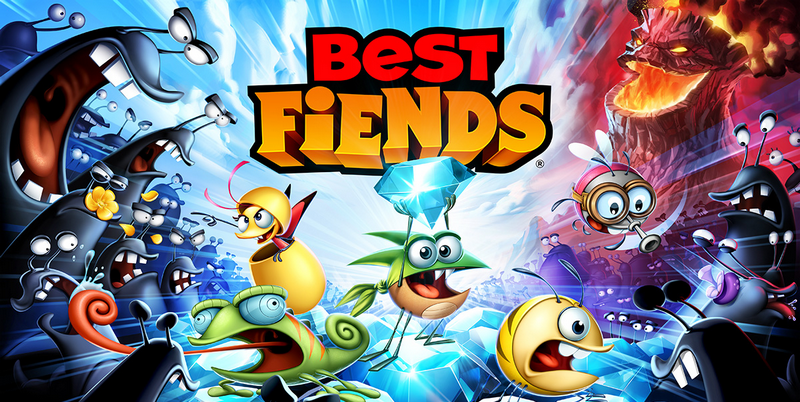Just in case you haven’t noticed, China is massive. It’s now the largest single-language market on the planet – three times bigger than the US. To put that into perspective, China has 242 million iOS devices, which is pretty much the same number of the total mobile phones in the US. That should mean it’s rich pickings for game developers. But it’s not that simple. Because the way we market games in the West looks very different in China.
Editor’s note: This post was originally published by Falko Böcker on the GameAnalytics blog. With years of publishing experience in both the east and the west and as a Senior Publishing Manager at Joypac, Falko knows the hurdles developers face when entering new markets.
At JoyPac, they combine the open and communicative style of western game publishers with the specialized know-how needed to be successful in Asia. And in this post, they’re going to help you navigate the potentially lucrative Chinese market, and avoid the potential pitfalls by telling you a bit about some of the cultural differences you need to be aware of when you’re trying to publish a game in China.
So, what are the differences?
Government regulation and censorship laws
You probably already know this but, regulation wise, there’s a lot to deal with in China. Like publication numbers – every developer, studio, and publisher needs one of these before they can even think about publishing a game in China. Unfortunately, only a Chinese entity with the right commercial license can apply for one.
Another thing to remember is that violence in games that’s acceptable in the West won’t fly in China. Rules are much tighter.
Some things just don’t translate
Just because a title’s popular with Western gamers doesn’t mean a quick translation into Mandarin will make it cross over to China. So once you’ve got your game past the censors, you’ll need to think about ‘localization’ – adapting your game’s look, feel or content to make it appeal to this market.
This might be something as simple as tweaking the dialogue or changing the name. Or you might need to go a lot further and think about changing your premise if people are going to struggle to relate to the world you’ve built.
Let’s take a look at Fluffy Fall as an example. Published by WHAT (games), Fluffy Fall was first produced in the West and became quite the hit there in 2017, but interestingly it wasn’t as successful in Asia initially. But just changing three of its characters to reflect the Lunar New Year celebrations that were happening at the time of the launch made a difference. This type of localization massively helped WHAT (games) increase the UA and retention of their game, getting over 1 million downloads in China alone.
In-app purchases are more popular (but they work differently)
It’s not an exaggeration to say that people in China use their mobiles to pay for everything – food, drink, entertainment – you name it. So they’re more than happy to make in-app purchases. In fact, players in China spend 50% more on in-app purchases than players in the rest of the world. Which is great. But the way they pay for these is different.
This may seem like an obvious example, but don’t make the same mistake as Finnish studio Supercell when they launched Clash of Clans in China back in 2013. They used Google Play for in-app purchases, which has no real presence in China – so players couldn’t buy anything. That’s an enormous monetization opportunity (more than 200,000 downloads in the first month) completely wasted.
You’ll need to know your tech giants
People in China don’t have access to the same social media, search engines and apps as we do in the West. There are four big names you need to know: Tencent, ByteDance, Alibaba and Baidu. Running a marketing campaign with just one of these behemoths can get you access to most of the country’s mobile users. Here’s a bit more about each one.
- Tencent: the biggest social media platform in China which takes up 55% of your average mobile user’s time. It’s also one of the leading publishers in China – alongside a company called Netease it publishes 100% of the top ten games.
- ByteDance: the parent company of TikTok. It’s the main entertainment and news outlet for Chinese mobile users. They have 11% of user’s time.
- Alibaba: the biggest e-commerce platform in China – so big that they’ve managed to do the unthinkable and force Amazon out of the Chinese market.
- Baidu: the Google of China, driving 80% of the country’s search traffic.
The games market in China is broadening
Over the past couple of years, casual (and even hyper-casual) games are becoming more and more popular. But just like any other game trying to make it in China, they need to be culturally related and optimized on the business side (just like mentioned above). Having a publisher familiar with the market can really help you make the most of your game in this lucrative market. If not, then you’ll really struggle to reach even a sliver of their audience.
This is particularly interesting as MMOs and ARPGs are usually considered to be the leaders in this market, due to their PC roots (driven by the fact that consoles were flat out banned in China for a period of time). Also, the popularity of Japanese pop culture is something else to bear in mind – there are lots of anime-based titles on the market (like Dragon Ball Z).
Psst… a few genres that don’t do particularly well in China are gambling, war/shooting games, or games that would be tricky to adapt (like wordy puzzle games).
There is an answer
If all this has got you panicking about breaking through in China, don’t worry. Yes, it’s a massive market. But unlike Europe, for example, everyone in it speaks the same language and has the same cultural background. So if your game can tap into something that resonates with them, you’ll soon see the profits come rolling in.
If you’re not sure how to hit this cultural sweet spot, then you might want to think about working with a local partner.
Friends with benefits
A Chinese partner which understands the market and the players within it is ideally placed to help you with the localization talked about earlier. They can also go one step further than just giving you funding and marketing support – some Chinese publishers will add to your game by producing new content and features to make sure they’ll appeal to the masses.
This could make getting your game published a lot simpler, and help you avoid any cultural or regulatory faux pas.






















